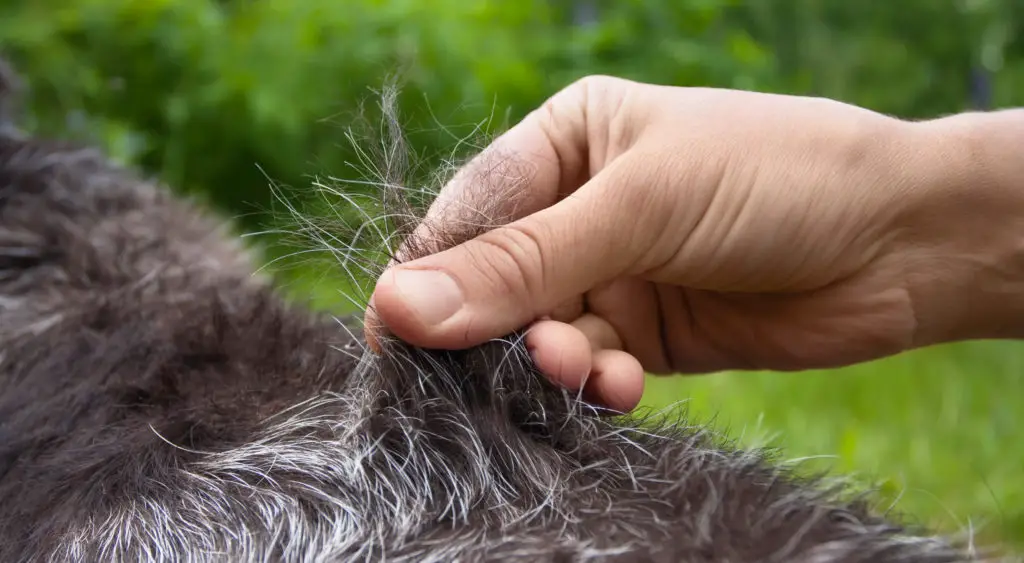Coat maintenance for some dogs involves more than usual brush, bath, cut or shave routine, some need to be “hand-stripped” too.
While it may sound like something you’d expect to see (or do) at a game of strip poker, hand stripping is a grooming technique used on dogs with wiry fur types to promote healthy coat development.
What is hand stripping?
Hand stripping or “plucking”, as it’s also known, is the process of removing dead fur by hand. Fear not, it actually sounds way more painful than it is.
While hand stripping is the most accurate way of stripping dead fur, it is also the most time-consuming. These days professional groomers are increasingly using stripping tools.
Why is hand stripping necessary?
Dogs with wiry fur that have an undercoat and topcoat, such as schnauzers and most breeds of terriers, do not shed properly due to the texture of their coats. Therefore, in order for new and healthy fur to grow out properly, this dead hair has to be removed.
Benefits of hand stripping
Healthier coat and skin
Stripping dead fur clears the hair follicle and surrounding area for new, thicker hair to push through. Left in place, the dead fur may accumulate leading to oil and debris build-up that could irritate the skin.
Better protection
This new coat offers better protection from general dirt, dust and the elements as well as a range of external parasites.
Better colors
All-round better colors and brighter vibrancy, especially in whites and darks.
How to hand strip a dog
After overcoming any fear of hurting your dog, hand stripping is not that hard, though it can be time-consuming not to mention physically strenuous.
First, identify any dead fur to be removed, now using your thumb and forefinger firmly grasp a few strands and give it a gentle tug to remove it.
If the fur is ready to be stripped it will come out with relative ease.
Using a stripping knife is another way to do it and can be considerably quicker once mastered. That said, proper use of the knife does take a certain amount of experience and if used incorrectly can end up cutting the fur and damaging the coat.
Note: it would be advisable to first learn how to hand strip your particular breed of dog from a professional before trying your hand at it (as it were).
Frequently asked questions
Which breeds need hand stripping?
Wiry/curly hair dog’s that have a double coat such as the following should be hand stripped:
- Airedale Terrier
- Australian Terrier
- Border Terrier
- Dachshund (Wirehaired)
- Dandie Dinmont
- German Wirehaired Pointer
- Giant Schnauzer
- Ibizan (Wirehaired)
- Irish Terrier
- Irish Wolfhound
- Lakeland Terrier
- Miniature Schnauzer
- Norfolk Terrier
- Scottish Terrier
- Sealyham Terrier
- Standard Schnauzer
- Welsh Terrier
- Wire Fox Terrier
- Wirehaired Pointing Griffon
Does hand stripping hurt dogs?
No, if done properly it does not hurt the dog, heck some dogs even seem to like it!
How often should a dog be hand stripped?
It’s hard to say but usually every 5-6 months. Essentially once the coat appears long, shaggy and dull it could be time for a strip. Have a feel around for any loose long hair.
Should you bathe a dog before or after hand stripping?
Many groomers claim that it’s not only easier to hand strip a “dirty dog” but that it’s also better for the dog.
Fur that is fairly coarse with no product or conditioner in is easier to strip, not only that but the stripping process leaves the pores open and follicles exposed, this can lead to skin problems when coming into contact with shampoo etc.
Therefore, a bath 2 or so weeks before the hand stripping and then again after a few weeks have passed may be preferable.


